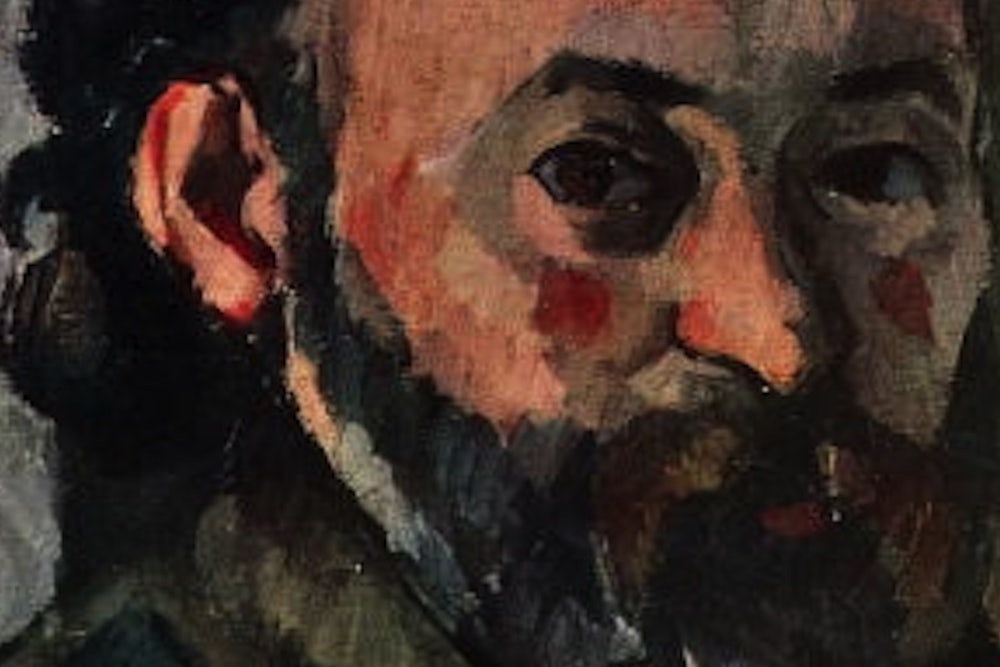The Birds of America: The Bien Chromolithographic Edition By John James Audubon
Open this glorious folio volume—over 21” high—and you’ll find yourself face to face with all the romantic power of Audubon’s Birds of America, that clear-eyed and opulent ode to the natural wonders of the New World. Whether he is presenting a close-up view of Purple Grakles nibbling on kernals of corn or a deep-focus vision of a monumental American Flamingo silhouetted against the Southern landscape, Audubon brings a storyteller’s feeling for the telling detail to his intricate, exacting images. This new edition, with its exquisitely printed plates and elegant binding and slipcase, is a triumph of the art of the book. Sometimes bigger is better—that’s certainly true here. Without the scale of these plates and the span of these pages we could hardly take the measure of Audubon’s American odyssey.
The Letters of Paul Cézanne edited and translated by Alex Danchev
There is a beautiful lightness and elegance, an almost watercolor quality, about Cézanne’s most remarkable letters. And Alex Danchev’s new edition of the letters, the first in a generation, is lucid and approachable, a book that everybody who loves modern painting will want to have on the shelf. We see the hotheaded volubility of the young Cézanne give way to a figure who is at once a rationalist and a dreamer. Here he is, near the end of his life, writing to the artist Émile Bernard: “The littérateur expresses himself in abstractions while the painter gives concrete expression to his sensations, his perceptions, by means of line and color. One cannot be too scrupulous, too sincere, or too submissive to nature; but one is more or less master of one’s model, and above all of one’s means of expression.” There is something at once paradoxical and winning in the way that humility and pride live side-by-side in the heart and the mind of this great artist.
Lolita: The Story of a Cover Girl: Vladimir Nabokov’s Novel in Art and Design edited by John Bertram and Yuri Leving
Nabokov, that most magnificently persnickety of all modern writers, cared passionately about the covers of his books. This variegated volume combines an album of eighty newly commissioned covers for Lolita with scholarly explorations of the almost endless visual presentations Nabokov’s novels have received. Eight different paperback covers for Pnin are reproduced. And it’s amusing to see what kitsch has been devised to ornament the work of this man who was such a stalwart critic of kitsch. There’s a cover for Ada that suggests an acid flashback, as well as one for King, Queen, Knave with a half-naked hunk and a swooning redhead that leaves Nabokov’s modernist masterwork looking like a romance novel. Then there are Nabokov’s own comments. He complains to the art director of Penguin UK about a designer’s “by now academic, simplifications and distortions,” and he gives sympathetic advice to Milton Glaser, who is working on a cover for Pnin and is supplied by the novelist with “some photographs of Pnin-like Russians, with and without hair.” The space between Pnin’s nose and upper lip, so Nabokov explains, is “terribly important.”
Artists and Amateurs: Etching in 18th-Century France by Perrin Stein
Artists and Amateurs, the catalogue of a captivating show this fall at the Metropolitan Museum of Art, is a provocative salute to the intimacy of printmaking as it was practiced in France at the dawn of the modern era. The works included range from Watteau’s delectable and extraordinarily rare etching of a group of actors, to Gabriel de Saint-Aubin’s dizzying scenes of Parisian life, to Fragonard’s whisper-soft landscapes. The amateur is a passionate nonprofessional, an art collector and connoisseur and perhaps sometime creator whose free-spirited approach surely had something to do with the eventual decline of the academy and the rise of the avant-garde. Artists and Amateurs provokes fresh thoughts about the push and pull between formality and playfulness in eighteenth-century French art—and how the triumph of pictorial play led to the bold experimentalism that Baudelaire would describe a century later in “The Painter of Modern Life.”
How to Look: Ad Reinhardt. Art Comics edited by Kristine Bell and Anna Gray
The American abstract artist Ad Reinhardt was a split personality. His paintings moved toward ever-greater austerity, with close-knit colors culminating in the quixotic black-on-black compositions of his final years. But at the same time he kept up a pretty constant stream of comic collages, visual and verbal joke fests with which he tickled the art world’s funny bone, leaving no artist, no idea, and no reputation intact. To study “Founding Fathers Folly Day,” published in Art News in 1954, is to see the history of the period through a funhouse mirror. There are boxing matches between the likes of Pollock and de Kooning—“wyomingpolecatvsdutchslasher”—and the Museum of Modern Art is referred to as “MUSEUMOFMIDDLEBROWART,” with its founding director, Alfred H. Barr, Jr., saluted for his “AllfriedBarrbigqueueHouseofFame.” This niftily produced volume, which presents the full range of Reinhardt’s sensational cartoons, is a thought-
provoking pleasure and a total hoot.
